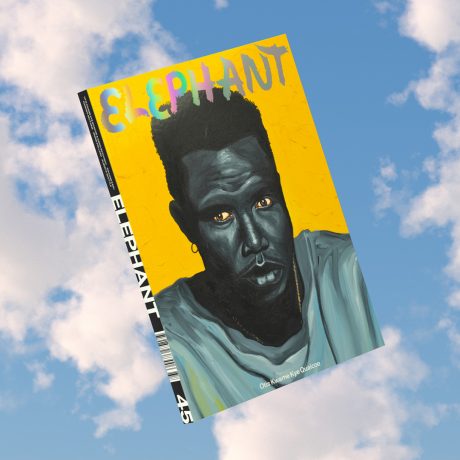
In 2021, Inclusivity, Diversity and Access are familiar buzzwords. However, beyond the rhetoric, things often seem to change very little. Statistics and surveys expose an infrastructure that is still controlled by privilege, power and profit, from blatant structural bias in the workforce of blue chips and major institutions, to foggy market trading standards that favour the few.
There has been an effort to break the money taboo in recent years, from books such as Otegha Uwagba’s We Need to Talk About Money to Refinery29’s Money Diaries (dubbed the place “millennial women go to judge one another’s spending habits” by The New Yorker). Yet despite these attempts to unfurl the issue (as well as the various ways that what we earn is tied up with other kinds of privilege) the question “how much do you earn?” is still shrouded in secrecy and shame.
At the end of last year Elephant launched its own investigation into attitudes and perceptions around money in the art world, inviting anyone working anywhere in the arts to answer questions in an anonymous online survey. The results (in the midst of a pandemic) aren’t surprising, but they are troubling: 71% of those who answered the survey said they do not feel they are paid fairly; 62% have considered quitting the sector in search of a better salary; while 79% say they feel they earn less than their peers working in other industries.
“How can we democratise the art world in real, practical terms?”
According to anecdotal evidence from our survey, many are unable to save or get on the property ladder, while others are making substantial personal sacrifices just to survive. People are foregoing healthy nutrition, living in unsuitable accommodation, or deciding not to have children for financial reasons. A widely referenced 2019 Arts Council England report revealed a particularly stark reality in which two-thirds of artists earn less than £5,000 a year from their practice.
A gamut of grim statistics is not enough to galvanise action when it comes to earnings. Change also depends on cultural attitudes shifting. So, how can we democratise the art world in real, practical terms? From alternatives to traditional old-boy networks, to new technologies that are diversifying the upper echelons of the art market, it might just be possible to build a bold, more inclusive future.
In our latest print issue Elephant three writers, Danielle Child, Sophie Haigney and Olivia Gavoyannis, reflect on the challenges facing the industry. We summarise their essays below; to read the full feature, order a copy of Elephant Issue #45 now.

Some Are More Equal Than Others
“Despite the liberal promise of inclusivity there remains a persistent inequality at the core of the art world that spans class, race and gender,” argues Danielle Child in her assessment of the current state of the art world. A senior lecturer at Manchester School of Art, she reflects on her own journey into the arts as a female art historian from a northern working-class background, pondering the myth of an open-access cultural world that sprang up under New Labour.
“The chances of a working-class candidate getting a job in the industry have remained unchanged for a generation.”
She argues that the reality was very different to the myth, highlighting the results of a 2018 report Panic! Social Class, Taste and Inequalities in the Creative Industries which concluded that “people of colour are substantially underrepresented; people from working-class backgrounds are paid less, and the chances of a working-class candidate getting a job in the industry have remained unchanged for a generation.” She finds some hope through the work of charities that seek to address this but the question remains: can culture ever really be a meritocracy?

Finding a New Following
“When I graduated from art school, I was 100 per cent prepared to be the starving artist to support my practice,” sculptor Dan Lam tells Sophie Haigney in her exploration of new business models for 21st century artists. “But as my Instagram grew, I realised I don’t have to do that,” Lam continues. “I have a lot more power than I anticipated.”
“As my Instagram grew, I realised I have a lot more power than I anticipated”
Lam is not alone. Haigney find artists successfully using everything from multi-tiered subscription schemes to kickstarter campaigns, hashtag-driven pledges of mutual financial support to direct sales to social-media followers. These methods of selling requires consistent posting, cultivating, staging and a lot of behind-the-scenes labour (all with the threat of old platforms changing policies or algorithms, or new platforms springing up to usurp them), but Haigney finds that they allowed some people to become that rarest of things: full-time artists.

Strongest Links in the Chain
Social media isn’t the only way that technology is revolutionising the art world. Olivia Gavoyannis looks into the ways that blockchain-based systems have the potential to reshape the marketplace for good.
“Instead of going to a gallery, which can be intimidating for some, you can collect on your own terms”
At one end of the spectrum she finds the art registry Artory which sets out to make the field more transparent, housing 42 million transaction records from around the world, all accessible for free. At the other end she finds a new crop of marketplaces dealing in digital art. “Instead of going to a gallery, which can be intimidating for some, or an art fair, which might be expensive to get to, you can collect on your own terms,” SuperRare founder John Crain tells her. “There’s a much lower barrier to entry.”
She also talks to those who find that this new digital model allows for a much closer connection between artist and potential buyer than ever before, possibly shattering one of the last hurdles between the wider world and art collecting.
All images © Ignasi Casas






